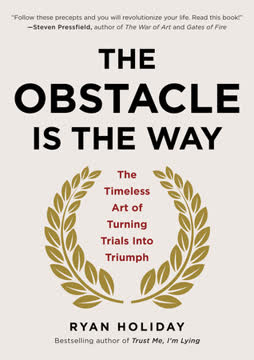Key Takeaways
1. Multiplying Time: Focus on Creating More Time Tomorrow
You multiply your time by spending time on things today that will give you more time tomorrow.
Redefine time management. Traditional time management focuses on efficiency (doing things faster) and effectiveness (doing the right things). However, true time multiplication involves spending time on activities that create more time in the future. This shift in perspective allows you to break free from the constant cycle of busyness and overwhelm.
Adopt a long-term mindset. Instead of just tackling today's to-do list, consider how your actions today will impact your available time tomorrow, next week, or next year. This approach requires:
- Identifying tasks that have compound effects
- Investing in systems and processes that streamline future work
- Developing skills that increase your efficiency and effectiveness over time
- Building relationships and networks that create opportunities and support
By focusing on time multiplication, you can escape the trap of constantly feeling behind and instead create a virtuous cycle of increasing productivity and freedom.
2. Overcome Priority Dilution by Adopting Three-Dimensional Thinking
Priority Dilution has nothing to do with being lazy, apathetic or disengaged. Yet it is the same net result: We delay the day's most important activities by consciously or unconsciously allowing our attention to shift to less important tasks.
Understand Priority Dilution. Many high-achievers fall victim to Priority Dilution, where they become overwhelmed by urgent but less important tasks, neglecting their true priorities. This leads to a constant feeling of falling behind despite working hard.
Embrace three-dimensional thinking. To combat Priority Dilution, move beyond traditional time management approaches:
- One-dimensional thinking: Efficiency (doing things faster)
- Two-dimensional thinking: Effectiveness (doing the right things)
- Three-dimensional thinking: Significance (considering long-term impact)
By adding the dimension of Significance to your decision-making process, you can better prioritize tasks that create lasting value and multiply your time. Ask yourself:
- How soon does this matter? (Urgency)
- How much does this matter? (Importance)
- How long will this matter? (Significance)
This three-dimensional approach allows you to focus on activities that have the greatest long-term impact, rather than constantly reacting to urgent but less significant demands.
3. Eliminate: Give Yourself Permission to Ignore the Unessential
You are either consciously saying no to the things that don't matter, or you are unconsciously saying no to the things that do.
Embrace the power of no. The first step in multiplying your time is to eliminate unnecessary tasks, commitments, and distractions. This requires overcoming the fear of saying no and giving yourself permission to ignore non-essential activities.
Identify and eliminate time-wasters. Common areas to target for elimination include:
- Unnecessary meetings
- Excessive email and communication
- Perfectionism on low-impact tasks
- Over-volunteering
- Unproductive habits (e.g., excessive TV watching)
- Toxic relationships or unreasonable people
To effectively eliminate, ask yourself:
- "Is this task something I can live without?"
- "Does this activity align with my long-term goals and values?"
- "Am I doing this out of habit, guilt, or fear rather than genuine necessity?"
By consciously choosing what to eliminate, you create space for the activities that truly matter and contribute to your long-term success and fulfillment.
4. Automate: Invest in Systems That Save Time Long-Term
Automation is to your time what compounding interest is to your money.
Recognize the power of automation. Investing time and resources into creating systems and processes that automate repetitive tasks can yield significant time savings in the long run. This approach requires an initial investment but pays dividends in freed-up time and increased efficiency.
Identify automation opportunities. Look for tasks and processes that:
- Are repetitive and predictable
- Require minimal human judgment
- Consume significant time when done manually
- Have a high potential for error when done manually
Examples of valuable automation include:
- Setting up email filters and auto-responders
- Using customer relationship management (CRM) systems
- Implementing project management and collaboration tools
- Creating templates for common documents and communications
- Using scheduling software for appointments and meetings
- Setting up automatic bill payments and financial transfers
When considering automation, calculate the return on time invested (R.O.T.I.) by comparing the time spent implementing the automation against the time saved over the long term. Prioritize automations with the highest R.O.T.I. to maximize your time multiplication efforts.
5. Delegate: Empower Others and Accept Imperfection
Leadership isn't about getting things done right. It's about getting things done through other people.
Overcome the delegation dilemma. Many high-achievers struggle with delegation due to perfectionism and the belief that "it's faster to do it myself." However, effective delegation is crucial for multiplying your time and scaling your impact.
Master the art of delegation. To delegate successfully:
- Identify tasks that don't require your unique skills or expertise
- Choose the right person for each task, considering their skills and development needs
- Provide clear instructions and expectations
- Allow for mistakes and learning opportunities
- Offer support and feedback throughout the process
Calculate delegation ROI. Use the 30x rule: If a task takes you 5 minutes daily, invest up to 150 minutes (30 x 5) in training someone else to do it. This initial time investment will yield significant returns over time.
Remember that delegation is not about offloading work, but about developing others and freeing yourself to focus on high-impact activities. By accepting imperfection and empowering your team, you create a culture of growth and multiply your collective time and impact.
6. Procrastinate on Purpose: The Power of Intentional Waiting
Patience is giving yourself time to breathe.
Distinguish between procrastination and patience. While traditional procrastination stems from avoidance or laziness, purposeful procrastination involves intentionally delaying tasks for strategic reasons. This approach can help you avoid unnecessary work and make better decisions.
Practice purposeful procrastination. Consider delaying action when:
- More information is needed to make an informed decision
- The situation may resolve itself without your intervention
- Waiting could lead to better options or opportunities
- Immediate action might result in wasted effort due to changing circumstances
Strategies for effective purposeful procrastination include:
- Setting reminders to revisit delayed tasks at appropriate intervals
- Communicating clearly with others about intentional delays
- Distinguishing between truly urgent matters and those that can wait
- Using waiting periods for reflection and strategic planning
By mastering the art of purposeful procrastination, you can reduce stress, improve decision-making, and focus your energy on the most timely and impactful activities.
7. Concentrate: Protect Your Most Significant Priorities
Until you accomplish your next most Significant priority, everything else is a distraction.
Identify your true priorities. After eliminating, automating, delegating, and purposefully procrastinating, you're left with your most significant priorities. These are the tasks and activities that truly deserve your focus and energy.
Create a protective environment for concentration. To maximize your impact on these priorities:
- Block out dedicated, uninterrupted time for deep work
- Remove or minimize potential distractions (e.g., notifications, unnecessary meetings)
- Communicate your focus time to others to manage expectations
- Use tools and techniques that enhance your concentration (e.g., Pomodoro Technique)
Maintain perspective. Regularly ask yourself:
- "Is what I'm doing right now the next most Significant use of my time?"
- "How does this task contribute to my long-term goals and values?"
- "Am I allowing urgent but less important matters to derail my focus?"
By fiercely protecting your time for your most significant priorities, you ensure that you're making progress on what truly matters, rather than simply staying busy with less impactful activities.
8. Create a POP Culture: Implement Time Multiplication Organization-Wide
The most Significant opportunity for cost savings in most companies today is not saving money. It's saving time.
Shift organizational focus to time multiplication. Recognize that time is often a more valuable and limited resource than money. Encourage your entire team or organization to adopt the principles of Procrastinate on Purpose (POP) to create a culture of time multiplication.
Implement POP principles across the organization:
- Educate team members on the Focus Funnel and three-dimensional thinking
- Encourage regular evaluation of tasks using the Eliminate, Automate, Delegate, Procrastinate, and Concentrate framework
- Foster a culture that values long-term significance over short-term urgency
- Implement systems and tools that support time multiplication efforts
- Recognize and reward individuals and teams that successfully multiply time
Conduct regular time reviews. Just as organizations conduct financial reviews, implement periodic time reviews to identify:
- Unnecessary time expenditures
- Opportunities for automation and process improvement
- Areas where delegation can be optimized
- Activities that can be eliminated or purposefully delayed
By creating a POP culture, you can dramatically increase your organization's productivity, innovation, and overall impact. This shift in mindset and practice allows everyone to focus on their most significant contributions, leading to better results and greater fulfillment for all involved.
Last updated:
FAQ
What's "Procrastinate on Purpose" about?
- Core Concept: "Procrastinate on Purpose" by Rory Vaden explores the idea of multiplying your time by focusing on tasks that create more time in the future.
- Five Permissions: The book introduces five permissions—Eliminate, Automate, Delegate, Procrastinate, and Concentrate—that help manage tasks more effectively.
- Time Management Redefined: It challenges traditional time management by adding the dimension of significance, which considers how long a task will matter.
- Practical Application: The book provides actionable strategies for individuals and organizations to improve productivity and reduce stress.
Why should I read "Procrastinate on Purpose"?
- New Perspective: It offers a fresh take on time management by focusing on multiplying time rather than just managing it.
- Actionable Strategies: The book provides practical methods that can be applied immediately to improve productivity.
- Emotional Insight: It addresses the emotional aspects of time management, such as the fear of saying no and the pressure to please others.
- Broad Applicability: Whether you're an entrepreneur, a manager, or a busy parent, the principles can be adapted to various life situations.
What are the key takeaways of "Procrastinate on Purpose"?
- Multiply Your Time: Focus on tasks today that will save you time tomorrow.
- Five Permissions: Learn to Eliminate, Automate, Delegate, Procrastinate, and Concentrate to manage tasks effectively.
- Significance Over Urgency: Prioritize tasks based on their long-term impact rather than immediate urgency.
- Emotional Management: Understand the emotional barriers to effective time management and how to overcome them.
What is the Focus Funnel in "Procrastinate on Purpose"?
- Decision-Making Tool: The Focus Funnel is a tool to help decide how to process tasks by asking key questions at each stage.
- Five Stages: It includes Eliminate, Automate, Delegate, Procrastinate, and Concentrate, each with a specific question to guide decision-making.
- Prioritization: It helps identify the next most significant task to focus on, ensuring that time is spent on what truly matters.
- Dynamic Process: Tasks cycle through the funnel, allowing for continuous evaluation and adjustment based on changing priorities.
How does "Procrastinate on Purpose" redefine time management?
- Three-Dimensional Thinking: It introduces the concept of significance, adding a third dimension to the traditional urgency and importance model.
- Beyond Efficiency: The book emphasizes creating more time rather than just fitting more tasks into the day.
- Emotional Component: It acknowledges the emotional aspects of time management, such as fear and guilt, and provides strategies to address them.
- Long-Term Focus: Encourages a shift from immediate results to long-term impact, aligning daily actions with future goals.
What are the Five Permissions in "Procrastinate on Purpose"?
- Eliminate: Remove tasks that don't add value or create time in the future.
- Automate: Invest in systems and technology that handle repetitive tasks.
- Delegate: Assign tasks to others, allowing them to grow and freeing up your time.
- Procrastinate: Intentionally delay tasks that don't need immediate attention.
- Concentrate: Focus intensely on the most significant task at hand.
What is the significance of the "Permission to Ignore" in "Procrastinate on Purpose"?
- Say No: It empowers you to say no to tasks that don't align with your priorities.
- Eliminate Distractions: Focus on what truly matters by eliminating unnecessary tasks.
- Emotional Freedom: Reduces the guilt associated with not doing everything, allowing for more focused work.
- Time Creation: By ignoring non-essential tasks, you create more time for significant activities.
How does "Procrastinate on Purpose" address emotional barriers to time management?
- Fear of Saying No: The book discusses the fear of letting others down and how to overcome it.
- Perfectionism: It encourages accepting imperfection to delegate tasks and free up time.
- Emotional Triggers: Identifies emotional triggers that lead to poor time management and offers strategies to manage them.
- Self-Management: Emphasizes that time management is about managing oneself, not just tasks.
What are some practical applications of "Procrastinate on Purpose"?
- Business Systems: Implement automation and delegation to streamline business operations.
- Personal Life: Apply the Five Permissions to manage household tasks and personal commitments.
- Leadership: Use the Focus Funnel to guide team priorities and improve organizational efficiency.
- Goal Setting: Align daily actions with long-term goals by focusing on tasks with significant future impact.
What are the best quotes from "Procrastinate on Purpose" and what do they mean?
- "You multiply your time by spending time on things today that will give you more time tomorrow." This quote encapsulates the book's core message of focusing on tasks that create future time.
- "Success is never owned; it is only rented—and the rent is due every day." It highlights the ongoing effort required to maintain success, emphasizing consistent action.
- "Your highest obligation to other people is to be your highest self." This quote stresses the importance of prioritizing personal growth to better serve others.
- "Patience is a great discipline indeed." It underscores the value of waiting for the right moment to act, rather than rushing into decisions.
How can "Procrastinate on Purpose" help organizations improve productivity?
- Time Review: Encourages organizations to conduct time reviews to identify and eliminate time-wasting activities.
- Cultural Shift: Promotes a culture of intentional time management, focusing on long-term impact rather than immediate results.
- Empowered Teams: By teaching the Five Permissions, teams can make more effective decisions about task management.
- Cost Savings: Identifies invisible costs related to time mismanagement, offering strategies to reduce them.
What is the role of patience in "Procrastinate on Purpose"?
- Strategic Waiting: Patience is about waiting for the right time to act, reducing the risk of unexpected changes.
- Emotional Balance: It helps manage the emotional pressure to act immediately, allowing for more thoughtful decision-making.
- Long-Term Vision: Encourages a focus on long-term goals, aligning actions with future outcomes.
- Counterbalance to Action: Complements the discipline of taking action by ensuring that actions are taken at the most opportune time.
Review Summary
Reviews of Procrastinate on Purpose are mixed. Many readers found the book's time management concepts helpful, particularly the "Focus Funnel" and ideas on eliminating, automating, and delegating tasks. Some appreciated the emphasis on significance and long-term impact. However, others felt the content was not revolutionary, too business-focused, or repetitive. Some criticized the book for excessive self-promotion and religious undertones. Overall, readers who resonated with the concepts found it valuable, while others saw it as mediocre or not applicable to their situation.
Similar Books







Download PDF
Download EPUB
.epub digital book format is ideal for reading ebooks on phones, tablets, and e-readers.





